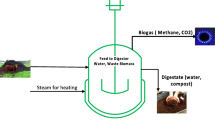Abstract
Cell growth kinetics and reactor concepts constitute essential knowledge for Bioprocess-Engineering students. Traditional learning of these concepts is supported by lectures, tutorials, and practicals: ICT offers opportunities for improvement. A virtual-experiment environment was developed that supports both model-related and experimenting-related learning objectives. Students have to design experiments to estimate model parameters: they choose initial conditions and ‘measure’ output variables. The results contain experimental error, which is an important constraint for experimental design. Students learn from these results and use the new knowledge to re-design their experiment. Within a couple of hours, students design and run many experiments that would take weeks in reality. Usage was evaluated in two courses with questionnaires and in the final exam. The faculties involved in the two courses are convinced that the experiment environment supports essential learning objectives well.


Similar content being viewed by others
References
Anderson JR (1995) Learning and memory. An integrated approach. Wiley, New York
De Jong T, Van Joolingen WR (1998) Scientific discovery learning with computer simulations of conceptual domains. Rev Educ Res 68(2):179–202
Merriënboer van JJG (1997) Training complex cognitive skills. Educational Technology Publications, Englewood Cliffs
Williams V (2003) Designing simulations for learning. J Instr Sci Tech 6(1), http://www.usq.edu.au/electpub/e-jist/docs/Vol6_No1/contents.htm
Nielsen J (2000) Designing web usability: the practice of simplicity. New Riders Publishing, Indianapolis
Keller JM (1987) Development and use of the ARCS model of motivational design. J Instr Dev 10(3):2–10
Norman D (1993) Things that make us smart—defending human attributes in the age of the machine. Addison-Wesley, Reading
Hofstein A, Lunetta VN (2003) The laboratory in science education: foundations for the twenty-first century. Sci Educ 88(1):28–54
Fisher D, Harrison A, Henderson D, Hofstein A (1999) Laboratory learning environments and practical tasks in senior secondary science classes. Res Sci Educ 28:353–363
Champagne AB, Gunstone RF, Klopfer LE (1985) Instructional consequences of students’ knowledge about physical phenomena. In: West LHT, Pines AL (eds) Cognitive structure and conceptual change. Academic, New York, pp 61–68
Eylon B, Linn MC (1988) Learning and instruction: an examination of four research perspectives in science education. Rev Educ Res 58(3):251–301
Savery JR, Duffy TM (1995) Problem-based learning: an instructional model and its constructivist framework. Educ Tech 35(5):31–37
Anderson JR (1993) Rules of the mind. Hillsdale, Erlbaum, New York
Trudel C, Payne SJ (1995) Reflection and goal management in exploratory learning. Int J Hum Comput Stud 42:307–339
Beeftink HH, Heijden Van der RTJM, Heijnen JJ (1990) Maintenance requirements: energy supply from simultaneous endogenous respiration and substrate consumption. FEMS Microbiol Ecol 73:203–210
Carroll JM, Rosson MB (1995) Managing evaluation goals for training. Comm ACM 38(7):40–48
Sagnella GA (1985) Model fitting, parameter estimation, linear and non-linear regression. Trends Biochem Sci 10:100–103
Smith LH, McCarty PL, Kitanidis PK (1998) Spreadsheet method for evaluation of biochemical reaction rate coefficients and their uncertainties by weighted nonlinear least-squares analysis of the integrated Monod equation. Appl Environ Microbiol 64:2044–2050
Munack A (1989) Optimal feeding strategy for identification of Monod-type models by fed-batch experiments. In: Fish NM, Fox RI (eds) Modelling and control of biotechnical processes. Proceedings of the 4th international congress. Comp Appl Ferm Technol, Cambridge, Pergamon, Oxford
Baltes M, Schneider R, Sturm C, Reuss M (1994) Optimal experimental design for parameter estimation in unstructured growth models. Biotechnol Prog 10:480–488
Dette H, Melas VB, Pepelyshev A, Strigul N (2003) Efficient design of experiments in the Monod model. J Roy Stat Soc Ser B 65:725–742
Takors R, Wiechert W, Weuster-Botz D (1997) Experimental design for the identification of macrokinetic models and model discrimination. Biotechnol Bioeng 56:564–576
Burham KP, Anderson DR (1998) Model selection and inference. A practical information and theoretic approach. Springer, Berlin, Heidelberg, New York
Stewart WE, Shon Y, Box GEP (1998) Discrimination and goodness of fit of multiresponse mechanistic models. AIChE J 44:1404–1412
Author information
Authors and Affiliations
Corresponding author
Rights and permissions
About this article
Cite this article
Sessink, O.D., Beeftink, H.H., Hartog, R.J. et al. Virtual parameter-estimation experiments in Bioprocess-Engineering education. Bioprocess Biosyst Eng 28, 379–386 (2006). https://doi.org/10.1007/s00449-005-0042-z
Received:
Accepted:
Published:
Issue Date:
DOI: https://doi.org/10.1007/s00449-005-0042-z




